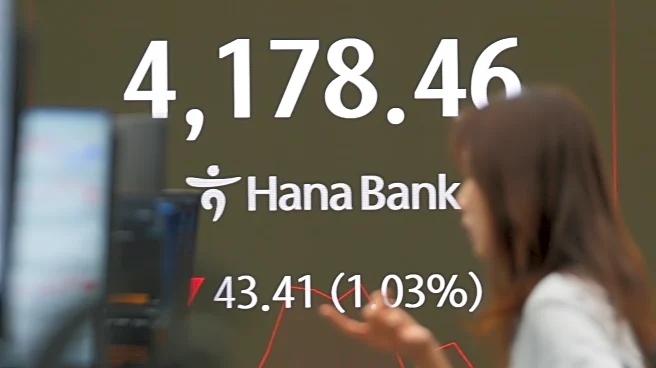What's Happening?
European stocks closed lower on Tuesday, reversing the positive sentiment observed at the start of the new trading month. The pan-European Stoxx 600 ended the trading session approximately 0.4% lower,
with most sectors experiencing losses. Germany's DAX index led the decline, closing down 0.8%. This downturn followed Monday's session, which had seen European stocks open positively ahead of a busy week of central bank decisions and corporate earnings reports. Additionally, the yield on the U.K.'s benchmark 10-year government bonds, known as gilts, fell by 2 basis points to 4.419% after Finance Minister Rachel Reeves announced that the government would make "hard choices" in the upcoming budget on November 26.
Why It's Important?
The decline in European markets highlights investor concerns over corporate earnings and upcoming central bank decisions. The performance of major indices like the Stoxx 600 and DAX can influence global market sentiment, affecting U.S. investors and businesses with international exposure. The bond yield movement in the U.K. reflects potential fiscal policy changes, which could impact economic stability and investor confidence. These developments are crucial for stakeholders in the U.S. financial sector, as they may affect investment strategies and economic forecasts.
What's Next?
Investors will be closely monitoring the upcoming corporate earnings reports and central bank decisions, which could further influence market movements. The U.K. government's budget announcement on November 26 is expected to provide more clarity on fiscal policies, potentially impacting bond yields and market sentiment. U.S. investors and businesses with European interests will need to stay informed about these developments to adjust their strategies accordingly.
Beyond the Headlines
The current market dynamics in Europe may lead to broader discussions on economic resilience and fiscal policy effectiveness. The emphasis on "hard choices" by the U.K. government could signal a shift towards austerity measures, which may have long-term implications for economic growth and social welfare. These factors could influence global economic trends and policy decisions in other regions, including the U.S.













